14 simple steps to create a snow effect for the photo
The Christmas atmosphere is approaching. If you want to make your photos sparkling, with Christmas atmosphere, just take a few basic steps. The following article Admin network will guide you how to create snow effect in photos in Photoshop. The steps are extremely simple and don't take as long as you think.
Photos before creating snow effects:

Photos after creating additional effects:

Step 1: Create a new Layer
To start, create a new layer on the image you want to edit. All you need to do is click your mouse on the New Layer icon at the bottom of the Layers Palette . You can see it is the second icon from the right-hand side, right next to the trash can icon (Trash bin).

Photoshop will automatically name the new layer you just created as Layer 1 . The newly created layer will be right above the active layer.
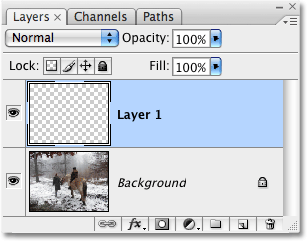
Step 2: Fill the new layer with black
After you've created a new layer, fill it with black. Normally before we make any modifications, the first step is to select the Layer in the Layers Palette , but in this case, Photoshop automatically selects the new Layer you created.
To fill the layer with black, simply use the Fill command in Photoshop. Go to the Edit Menu (Edit Menu ) at the top of the screen and select Fill.
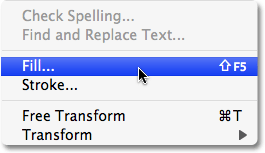
You will see a dialog box containing Fill statements. At the top of the dialog box is the content. In this section you can choose the color you want to fill for the Layer. On the list, select Black and then click OK to exit the dialog box.
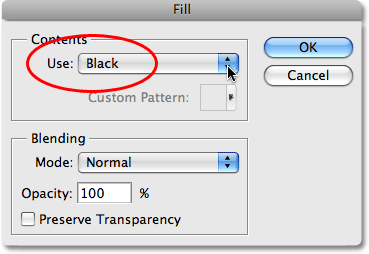
After "Layer 1" (located just above the active layer) has been filled with black, the new layer window will appear all black.
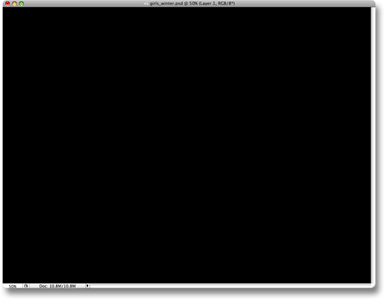
Step 3: Add Noise effect
Add effects to your new Noise Layer. Surely when I hear the word 'Noise' , many people will think about adding a certain sound. However, in Photoshop, 'Noise' is just small dots (also known as grain noise).
Photoshop has a special filter that allows you to add noise to the image. This filter is called Add Noise . Go to the Menu Filter at the top of the screen, select Noise then select Add Noise .
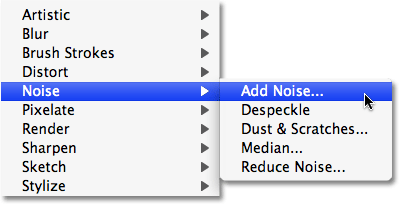
You will see the Add Noise dialog box appear. Use the Amount slider in the middle of the dialog box to adjust the amount of Noise added. Drag the slider to a value of about 150% or more.
At the bottom of the dialog box, select the Gaussian option, then select the Monochromatic option at the bottom of the dialog box, directly below the Gaussian option. This option will allow you to choose Noise that is black or white instead of Noise red and green as default.
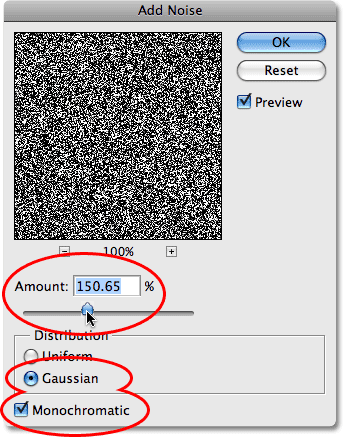
Click OK after you have completed the steps above. The new layer after adding Noise will take the following shape:
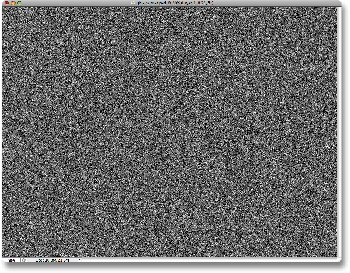
Step 4: Blur Noise (noise)
After successfully adding the Noise effect, proceed to blur the Noise step. The simplest way to blur in Photoshop is to use the Gaussian Blur Filter . Using Gaussian Blur Filter is extremely simple and allows you to control the amount of blurred parts.
Also you can use a more simple way. Go to Menu Filter, select Blur and then select Blur More.
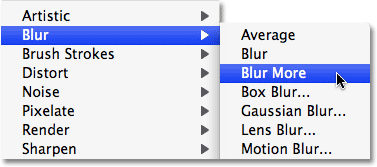
Blur and Blur More commands allow you to blur images quickly and simply, without hassles. Blur makes image blur extremely delicate, Blur More also allows you to blur the image but with more blur level. However, when using Blure More , the dialog box does not display on the screen, so you cannot control how much blur the image is. So you should use Filter Gaussian Blur to make blur noise in images more efficient.
Step 5: Reduce the number of Noise with the Level command
Go to the Menu Image at the top of the screen, select Adjustments , then choose Levels.

After the Level dialog box appears, you will see in the middle of the dialog box a graph showing the brightness, range . image. In other words this graph shows us how many pixels in the image.
Just below the graph are three small sliders - a black slider on the left, a white slider on the right, and a gray slider in the middle. These sliders are not only used to remove Noise, but also to increase the brightness of Noise when creating a snow effect.
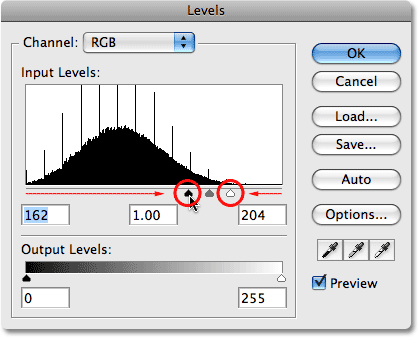
First, to increase Noise brightness, click on the white slider below the graph and drag to the left until you see the noise in your image brighter.
To delete Noise, click your mouse on the black slider and drag to the right until you see the Noise section of the image changes to black only.
Continue dragging the black slider to the right until you have cleared enough Noise . Then click OK to exit the Levels dialog box. Your new image will look like this:
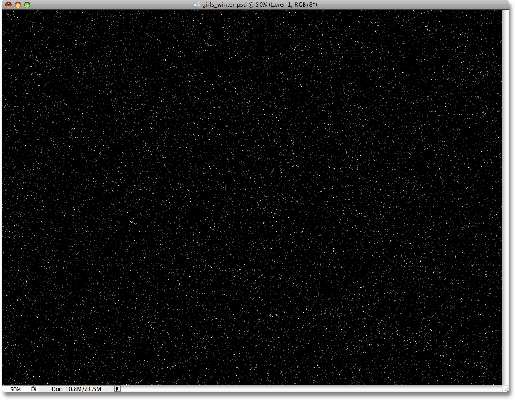
Step 6: Set the Layer Blend Mode to "Screen"
Continue with Layer 1 you selected, go to the Blend Mode option at the top of the Layers Palette . Often rarely in Photoshop software display "Blend Mode" , but you can see a dialog box that is set to "Normal" by default. The dialog box is the Blend Mode option. Your task is to select Screen on the Blend Mode option list .
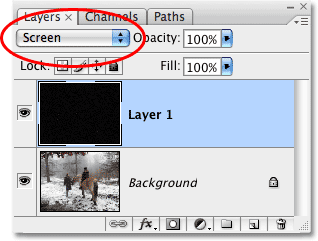
The Blend Mode in "Layer 1" is set to Screen . Your new image as shown below:
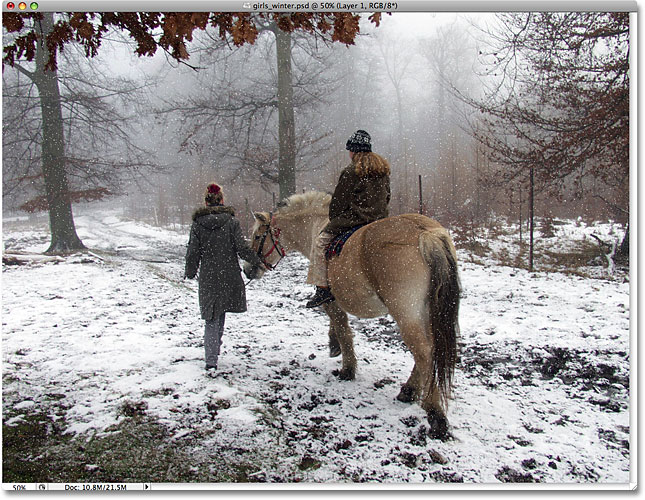
See also: How to use Photoshop CS5 - Part 21: Create a water ripple effect in a photo
Step 7: Edit parameters on "Motion Blur"
Go to Menu Filter (filter), select Blur, then select Next Motion Blur.
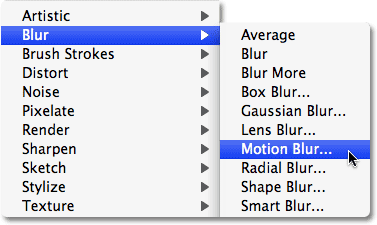
You will see the Motion Blur dialog box appear. At the bottom of the dialog box are 2 sections that adjust parameters. The first option is Angle, which allows you to directly set the amount of snowfall. You can set Angle to about -65 ° . Below is the Distance option (Distance option) that allows you to adjust the snow movement path.
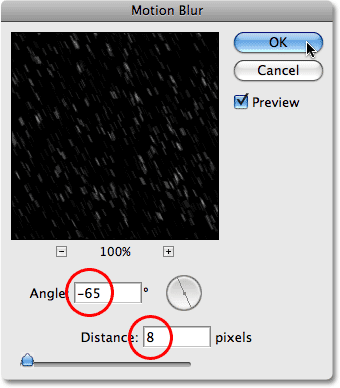
After selecting the parameters, click on OK to finish and exit the dialog box. You will see the snow effect on the photo just like real snow.
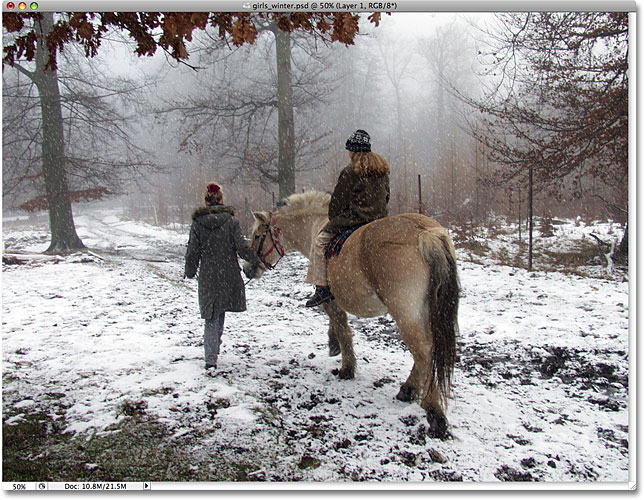
Step 8: Duplicate the Layer

First duplicate "Layer 1". Go to the Menu Layer at the top of the screen, select New, then select Layer via Copy . Or the faster way is to press Ctrl + J (for Windows) or Command + J (for Mac) . A new layer named "Layer 1 copy" will appear, above Layer 1.
Step 9: Rotate the new layer 180 °
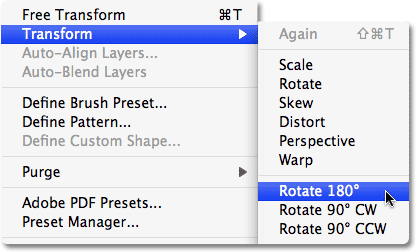
With "Layer 1 copy" selected on the Layers Palette (the Layers panel) , go to Menu Edit (edit menu) at the top of the screen, select Transform, then select Rotate 180 ° (rotate 180 °).
Step 10:
Go to Filter and choose Pixelate then select Crystallize.
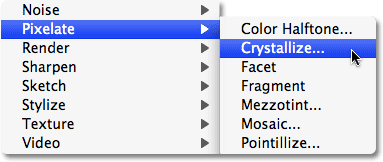
Then the Crystallize dialog box will appear.The Crystallize filter allows you to break an image into small pieces or understand it as 'Cell ', color. You can resize the Cells with the Cell Size option located at the bottom of the dialog box. The default value is 10.
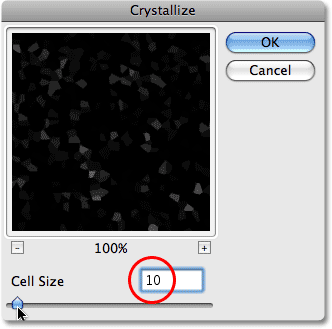
Click OK to exit the dialog box. You will get the new photo as follows:
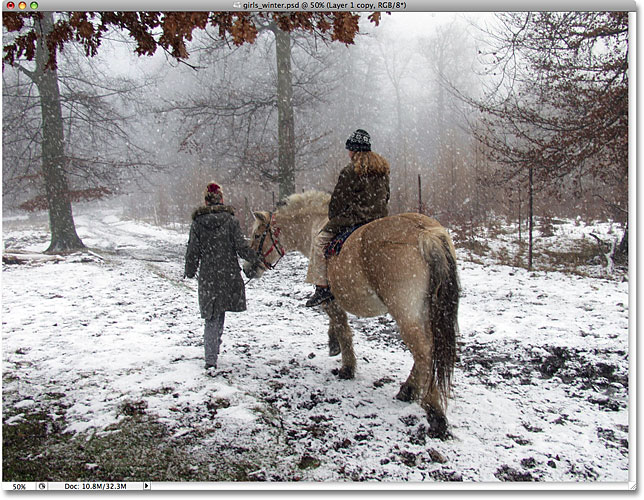
Step 11:
Create snowflake effect with larger size. Go to Menu Filter , select Blur then select Motion Blur again. When the Motion Blur dialog box appears, go to the Angle section to delete the -65 ° setting. Edit settings Distance options (Distance option) is about 16 pixels.
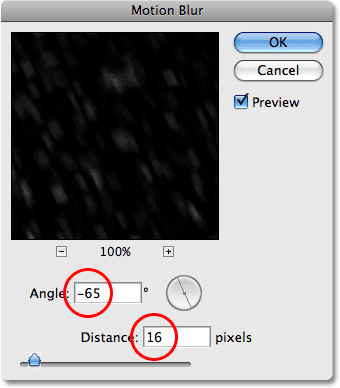
Click OK to exit the dialog box. Once completed, the snow effect in the photo will look like this:
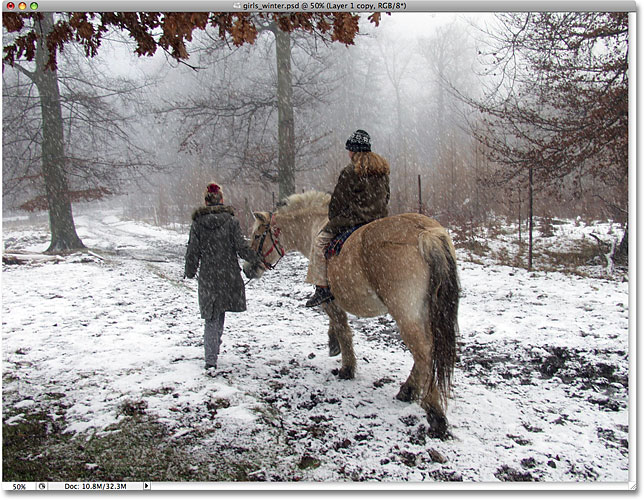
Step 12: Combine 2 layers of snow falling together
With "Layer 1 copy" selected on the Layers palette, go to Menu Layer and select Merge Down.
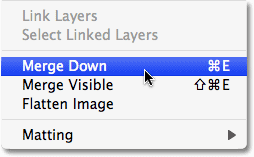
This option allows you to combine two layers together. You can see in the illustration below, "Layer 1 copy" has been merged into "Layer 1".
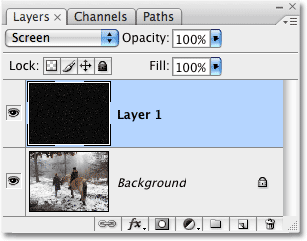
Step 13: Duplicate "Layer 1"
The fastest way to duplicate is to use Ctrl + J (for Windows) or Command + J (for Mac) . The Layers palette will display two layers.
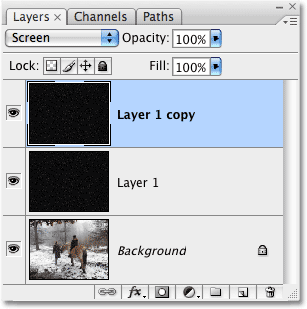
Both layers contain snowflakes and are set to Blend Mode to Screen .You can see the image below, falling snowflakes are doubled brightness.
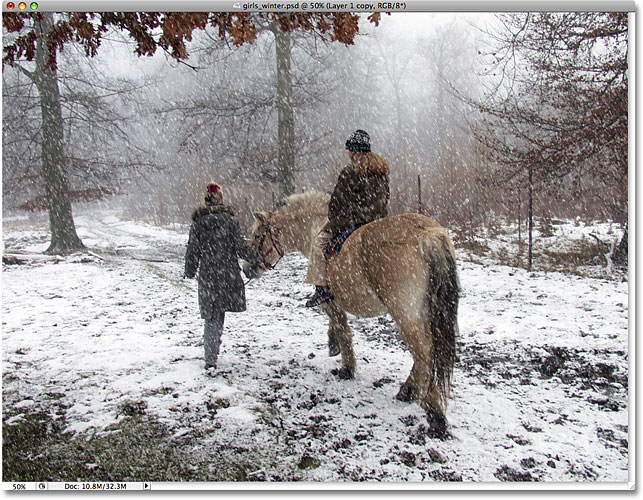
Step 14: Reduce the brightness of the Top Layer
If the snow effect in the image you are creating is too bright, you can reduce the brightness of the Top Layer . On the Blend Mode option located at the top of the Layers Palette, you'll find the Opacity option directly there.
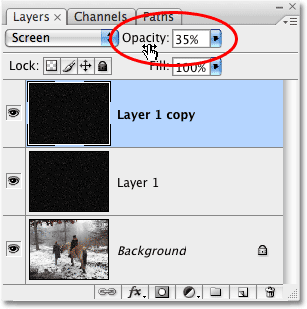
After you have selected the parameters, you have completed the editing process. The image after you have selected and adjusted the parameters will be as follows:
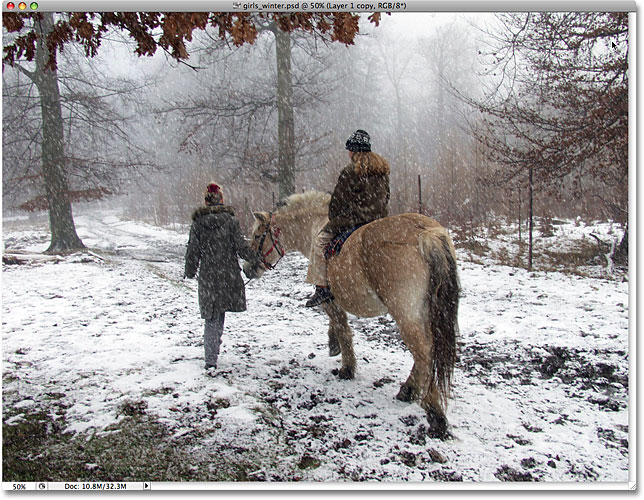
Good luck!
You should read it
- Instructions for using Photoshop CS6 (Part 5): Create christmas cards with snowflakes on a red background
- Guide 22 ways to make beautiful Christmas cards and very easy for you
- PhotoShop: Create your own Christmas cards
- How to create snowflakes in Photoshop
- Instructions for using Photoshop CS6 (Part 7): Creating Christmas cards with Christmas balls on a Stylish background
- How to create snowfall effect with DesktopSnowOK
- Why is there a Christmas? (Part 2)
- Tutorial to create a sparkling snow effect using Photoshop Brush
May be interested
- Tutorial for creating slideshows in JavaScript with 3 easy steps
 if you are studying or interested in programming, do not skip the article below to guide how to create slideshows in java script with 3 simple steps.
if you are studying or interested in programming, do not skip the article below to guide how to create slideshows in java script with 3 simple steps. - How to create Picture in Picture effect in Photoshop
 this tutorial will show you how to create a cool picture in picture effect with adobe photoshop by taking a single photo and creating the illusion that a smaller, cropped version of the same photo is inside it.
this tutorial will show you how to create a cool picture in picture effect with adobe photoshop by taking a single photo and creating the illusion that a smaller, cropped version of the same photo is inside it. - How to create poster effect for photos in Photoshop
 add a quick and easy poster effect to your images using photoshop to recreate the classic look of posters printed with limited ink colors.
add a quick and easy poster effect to your images using photoshop to recreate the classic look of posters printed with limited ink colors. - Macromedia Flash - Running text effect
 with just a few simple steps you can completely create a seemingly complicated effect. you can apply this lesson as a text effect for some advertising banners or slideshows.
with just a few simple steps you can completely create a seemingly complicated effect. you can apply this lesson as a text effect for some advertising banners or slideshows. - Macromedia Flash - The blur effect changes between two images
 this lesson will show you how to create a blur effect between two images. when a photo is blurred, the other image will appear clearly and vice versa. you can use this simple effect when you want to highlight something that is in many existing objects.
this lesson will show you how to create a blur effect between two images. when a photo is blurred, the other image will appear clearly and vice versa. you can use this simple effect when you want to highlight something that is in many existing objects. - How to use Photoshop CS5 - Part 21: Create water ripple effect in photos
 in the next part of the tutorial series on photoshop, we will learn and practice the basic steps to create a photo with the water surface moving and wavy. in fact, photoshop already has a number of filters available to create the same effect ...
in the next part of the tutorial series on photoshop, we will learn and practice the basic steps to create a photo with the water surface moving and wavy. in fact, photoshop already has a number of filters available to create the same effect ... - How to use Photoshop CS6 (Part 4): Create a fading effect
 dispersion effect in photoshop cs is relatively simple but very difficult to create the right effect. please read this article to know how to create a standard vanish effect.
dispersion effect in photoshop cs is relatively simple but very difficult to create the right effect. please read this article to know how to create a standard vanish effect. - How to create a mirror image effect without expensive software
 reflecting images to create a reflection effect is one of the easiest ways to add a playful touch to your photos. it's extremely simple to do - no fancy photo editing software required.
reflecting images to create a reflection effect is one of the easiest ways to add a playful touch to your photos. it's extremely simple to do - no fancy photo editing software required. - Learn how to create a fade effect with Photoshop CS6
 the dispersion effect in photoshop cs is relatively simple but it is very difficult to create the effect correctly. read this article to learn how to create a perfect dispersion effect.
the dispersion effect in photoshop cs is relatively simple but it is very difficult to create the effect correctly. read this article to learn how to create a perfect dispersion effect. - Steps to make rain in Photoshop look lifelike with just a few taps
 this article will show you how to create realistic rain in photoshop with just a few simple steps, helping you to have photos that look extremely attractive and romantic.
this article will show you how to create realistic rain in photoshop with just a few simple steps, helping you to have photos that look extremely attractive and romantic.










 Guide to change Background beautiful, detailed and easy to learn
Guide to change Background beautiful, detailed and easy to learn 4 common errors on camera can be fixed in Lightroom
4 common errors on camera can be fixed in Lightroom How to turn photos into pictures with PhotoFunia online
How to turn photos into pictures with PhotoFunia online The indispensable application for believers check-in food
The indispensable application for believers check-in food How to change the interface background color in Photoshop
How to change the interface background color in Photoshop What is the face of the stars? This app will tell you all
What is the face of the stars? This app will tell you all